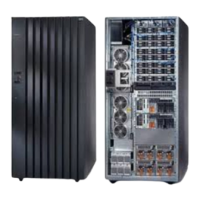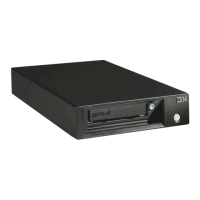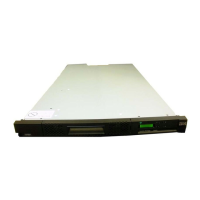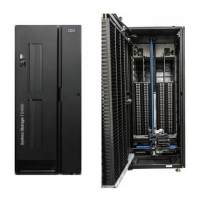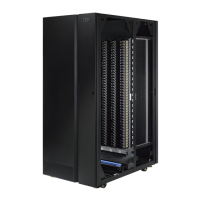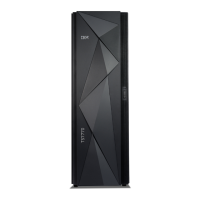Processor memory
The DS8100 Model 921 offers up to 128 GB of processor memory and the DS8300
Models 922 and 9A2 offer up to 256 GB of processor memory. The Non-Volatile
Storage (NVS) scales to the selected processor memory size, which can also help
optimize performance.
Data management features
The DS8000 storage unit is designed with the following management features that
allow you to securely process and access your data according to your business
needs even if it is 24 hours a day and 7 days a week.
RAID
Redundant array of independent disks (RAID) is a method of configuring multiple
disk drives in a storage subsystem for high availability and high performance.
The collection of two or more disk drives presents the image of a single disk drive
to the system. In the event of a single device failure, data can be read or
regenerated from the other disk drives in the array. With RAID implementation, the
storage unit offers fault-tolerant data storage. The storage unit supports RAID
implementation on the storage unit device adapters. The storage unit supports
groups of disk drive modules (DDMs) in both RAID 5 and RAID 10.
RAID 5
RAID 5 is a method of spreading volume data plus data parity across multiple disk
drives. RAID 5 increases performance by supporting concurrent accesses to the
multiple DDMs within each logical volume.
RAID 10
RAID 10 implementation provides data mirroring from one DDM to another DDM.
RAID 10 stripes data across half of the disk drives in the RAID 10 configuration.
The other half of the array mirrors the first set of disk drives. In some cases, RAID
10 offers faster data reads and writes than RAID 5 because it does not need to
manage parity. However, with half of the DDMs in the group used for data and the
other half used to mirror that data, RAID 10 disk groups have less capacity than
RAID 5 disk groups.
Arrays across loops
The arrays across loops helps prevent data loss.
The storage unit provides arrays across loops on open-systems, S/390, and zSeries
hosts. For RAID 10, arrays across loops provides mirroring across two loops, which
prevents loss of the array during loop failure.
Storage System LPARs (logical partitions)
The DS8300 Model 9A2 exploits LPAR technology, allowing you to run two separate
storage server images.
Each Storage System LPAR has access to:
v 50 percent of the processors
v 50 percent of the processor memory
Chapter 1. Introduction to IBM TotalStorage DS8000 series 15

